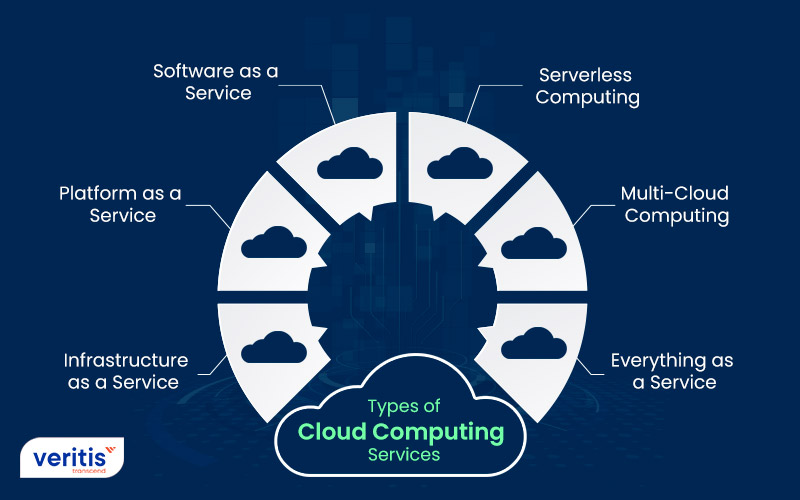Simplify Your Infrastructure With Cloud Services
As organizations navigate the ever-evolving landscape of technology and information administration, the function of cloud services in streamlining framework has become significantly popular. How can organizations successfully navigate this transition and really unlock the potential of cloud services for simplifying their framework?
Benefits of Cloud Solutions
Cloud services provide a structured approach to handling IT infrastructure, offering services with scalability, adaptability, and cost-efficiency. One of the vital advantages of cloud services is the scalability they provide. Organizations can quickly scale their resources up or down based on demand, guaranteeing they only spend for what they make use of. This versatility is especially beneficial for organizations with rising and fall requirements or those experiencing development.
In addition, cloud solutions remove the requirement for organizations to buy pricey software and hardware. This cost-efficiency is a substantial benefit, especially for tiny to medium-sized business wanting to decrease in advance prices. By utilizing cloud services, companies can access top notch IT sources without the significant cost related to conventional infrastructure arrangements.
In addition, cloud solutions provide services with the versatility to access their data and applications from anywhere with a web connection. This degree of access boosts cooperation amongst teams, enables remote work, and raises total performance. The adaptability used by cloud services equips organizations to adapt rapidly to altering market conditions and customer demands.
Expense Savings and Scalability
Along with the functional benefits highlighted previously, the assimilation of cloud solutions right into a business's facilities yields substantial cost savings and enhanced scalability. Cloud solutions offer a pay-as-you-go design, enabling businesses to scale sources up or down based on current demands, therefore staying clear of the costs connected with preserving excess capacity. This adaptability allows business to adjust quickly to rising and fall needs without sustaining unneeded expenses.
Furthermore, cloud solutions eliminate the demand for in advance investments in hardware and software program, decreasing resources expenditures. Operating costs are also decreased as firms no much longer require to handle and keep physical web servers, leading to reduced energy usage and IT staffing costs. Additionally, cloud solutions offer automatic updates and upkeep, making certain that the infrastructure stays up-to-date and safe and secure without requiring hand-operated interventions.
Improved Protection Measures
Applying rigorous safety actions is vital when incorporating cloud solutions into a firm's framework to guard sensitive data and make certain compliance with sector laws. Cloud solution suppliers offer boosted safety functions such as information encryption, firewall protection, and multi-factor verification to mitigate cybersecurity dangers. File encryption aids shield information both at rest and en route, making certain that just licensed customers can access delicate information. Firewall softwares act as a barrier between exterior hazards and inner networks, tracking and regulating incoming and outbound network website traffic. Multi-factor authentication adds an extra layer of security by calling for individuals to give numerous forms of confirmation prior to accessing the cloud solutions.
Moreover, routine protection audits and conformity evaluations aid make sure and identify susceptabilities adherence to industry criteria. Business can additionally take advantage of features like computerized safety updates and real-time risk surveillance given by cloud service providers. By focusing on protection procedures and staying proactive in dealing with potential risks, businesses can confidently utilize cloud solutions while shielding their valuable data from unauthorized accessibility or violations.
Transitioning to Cloud Infrastructure
To successfully incorporate cloud solutions right into a firm's framework, an organized method that resolves the change towards cloud-based remedies is necessary. Transitioning to shadow framework involves cautious preparation and execution to make sure a smooth migration process. The initial step is to examine the current framework and determine which systems and applications appropriate for migration to the cloud. This examination ought to More Info take into consideration variables such as data sensitivity, compliance demands, and efficiency demands.
Once the assessment is total, a migration method must be created. This approach needs to outline the timeline, resources, and obligations for relocating each element to the cloud. It is necessary to communicate this plan plainly to all stakeholders to make certain positioning and lessen disruptions during the change.
During the movement testing, procedure and tracking are critical to identify and deal with any kind of problems without delay. Routine checkpoints must be developed to track development and make required changes. Furthermore, training for employees on making use of cloud services need to be supplied to guarantee an effective shift and make the most of the advantages of the brand-new framework.
Ideal Practices for Cloud Fostering
Effective fostering of cloud services pivots on the tactical alignment of service goals with technical capacities and business preparedness. To guarantee a smooth transition to the cloud, organizations must begin by performing a thorough evaluation of their current infrastructure and determining which workloads are best suited for cloud migration. It is important to entail vital stakeholders from different departments in the decision-making process to obtain buy-in and address any kind of concerns beforehand.
Another ideal method for cloud adoption is to prioritize safety and conformity. Organizations must thoroughly assess the safety measures supplied by cloud company and ensure that their information is safeguarded according to sector requirements and regulatory requirements. Carrying out durable information security, access controls, and routine safety audits can aid minimize risks connected with cloud fostering.

Final Thought

As businesses navigate the ever-evolving landscape of innovation and data monitoring, the duty of cloud solutions in simplifying facilities has actually become progressively popular - linkdaddy cloud services press release. Exactly how can Resources organizations efficiently browse this transition and absolutely unlock the potential of cloud services for streamlining their facilities?
Cloud solutions supply a streamlined method to managing IT facilities, supplying organizations with scalability, adaptability, and cost-efficiency. By using cloud services, services can access high-quality IT resources without the significant rate tag linked with traditional infrastructure setups.
To guarantee a smooth shift to the cloud, companies should begin by carrying out a detailed assessment of their existing framework and determining which workloads are best fit for cloud migration.